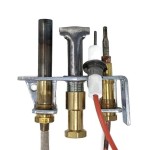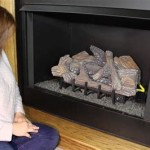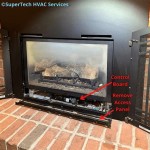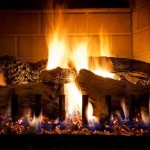```html
Stone Fireplace Hearth Designs
A fireplace hearth, traditionally a non-combustible platform extending from the fireplace opening, serves multiple crucial functions within a fireplace system. It safeguards the surrounding flooring from sparks and embers, provides a stable and heat-resistant surface for tending to the fire, and contributes significantly to the overall aesthetic appeal of the fireplace. Stone, with its inherent durability, heat resistance, and varied aesthetic possibilities, is a popular and enduring material choice for hearth construction. The selection of a stone fireplace hearth design should consider the fireplace style, the room's design elements, and the practical requirements of the space.
The hearth serves as a visual anchor for the fireplace, often becoming a focal point in the room. Its design impacts the perceived size and scale of the fireplace, and the chosen material contributes to the room's overall atmosphere. The hearth can be flush with the floor, raised above floor level, or feature a cantilevered design. The choice depends on the desired aesthetic, safety considerations, and accessibility requirements.
Key Considerations for Stone Hearth Selection
Several factors must be carefully evaluated when selecting a stone for a fireplace hearth. These include the stone's heat resistance, durability, aesthetic qualities, and maintenance requirements. Neglecting these considerations can lead to safety hazards, premature degradation of the hearth, or an aesthetically displeasing outcome.
Heat Resistance: The primary function of a hearth is to protect against the heat emanating from the fireplace. Certain types of stone are more heat-resistant than others. For instance, granite and slate are known for their excellent heat tolerance and are frequently preferred for hearth applications. Softer stones like marble, while aesthetically pleasing, may be more susceptible to thermal shock and cracking with prolonged exposure to high temperatures. Appropriate sealing and proper installation can somewhat mitigate these risks, but selecting inherently heat-resistant stone provides a more robust and reliable solution.
Durability: The hearth surface is subject to foot traffic, dropping of fireplace tools, and potential impact from logs. Therefore, the chosen stone must be durable and resistant to scratching, chipping, and abrasion. Harder stones like granite, quartzite, and some types of sandstone offer superior durability compared to softer stones like soapstone or limestone. The finish applied to the stone also contributes to its durability; a honed or flamed finish can provide better scratch resistance than a highly polished surface.
Aesthetic Qualities: Stone offers a vast array of colors, textures, and patterns, allowing for a high degree of customization in hearth design. The aesthetic qualities of the stone should complement the style of the fireplace and the overall decor of the room. For example, a rustic fireplace may pair well with a natural cleft slate or a rough-hewn sandstone hearth, while a more modern fireplace might benefit from a sleek, polished granite or marble hearth. Consider the color variations, veining patterns, and overall texture of the stone to ensure it aligns with the desired aesthetic.
Maintenance Requirements: Different types of stone require varying levels of maintenance. Some stones are more porous and susceptible to staining than others. For instance, marble and limestone are known to be highly porous and require regular sealing to prevent staining from spills or soot. Granite and slate are generally less porous and easier to maintain. Consider the amount of time and effort willing to be devoted to maintaining the hearth before selecting a particular type of stone. Regular cleaning and sealing are essential for preserving the appearance and longevity of the stone hearth.
Popular Stone Choices for Fireplace Hearths
The selection of stone for a fireplace hearth is diverse, with each option offering a unique set of characteristics and aesthetic qualities. The following are some of the most commonly used stone types for hearth construction:
Granite: Granite is a hard, durable, and heat-resistant igneous rock that is an excellent choice for fireplace hearths. It is available in a wide range of colors and patterns, from subtle grays and blacks to vibrant reds and blues. Granite is relatively low-maintenance and resistant to staining, making it a practical choice for high-traffic areas. Its density and hardness also make it resistant to scratching and chipping. Granite hearths can be polished to a high sheen for a modern look or left with a honed or flamed finish for a more rustic appearance.
Slate: Slate is a fine-grained metamorphic rock known for its distinctive layered appearance and natural cleft texture. It is a durable and heat-resistant material that is well-suited for fireplace hearths. Slate is typically available in shades of gray, black, green, and purple. Its natural texture provides excellent slip resistance, making it a safe choice for hearths. Slate is also relatively low-maintenance, requiring only occasional cleaning and sealing. The natural variations in color and texture give each slate hearth a unique and characterful appearance.
Marble: Marble is a metamorphic rock prized for its elegant appearance and intricate veining patterns. While visually stunning, marble is softer and more porous than granite or slate, making it more susceptible to staining and scratching. Marble also has lower heat resistance compared to other stones and is vulnerable to thermal shock. However, with proper sealing and care, marble can be a beautiful and appropriate choice for hearths, especially in fireplaces that are used infrequently or primarily for decorative purposes. Marble hearths are often used in more formal or traditional settings.
Limestone: Limestone is a sedimentary rock composed primarily of calcium carbonate. It is a relatively soft and porous stone available in a range of colors, including beige, cream, and gray. Limestone is often used in hearth construction for its natural warmth and earthy tones. However, due to its porosity, limestone requires regular sealing to prevent staining and water damage. It is also more susceptible to scratching and chipping than harder stones like granite or slate. Limestone hearths are best suited for fireplaces that are not used frequently or that are primarily decorative.
Soapstone: Soapstone is a metamorphic rock composed mainly of talc, giving it a smooth, soapy feel. It is known for its excellent heat retention properties and its ability to withstand thermal shock, making it a suitable choice for fireplace hearths. Soapstone is relatively soft and can be scratched easily, but scratches tend to blend in over time, adding to its character. It is typically available in shades of gray and green. Soapstone is also relatively non-porous and resistant to staining. Its unique thermal properties make it a popular choice in historically-inspired designs.
Sandstone: Sandstone is a sedimentary rock composed of sand grains cemented together. It is available in a wide range of colors, including beige, brown, red, and orange. Sandstone is a relatively soft and porous stone that requires regular sealing to prevent staining and water damage. It can be prone to weathering and erosion, especially in outdoor applications. However, sandstone can provide a rustic, natural look. Its use often necessitates periodic maintenance depending on environmental exposure.
Hearth Design Considerations
Beyond the choice of stone material, the overall design and configuration of the hearth significantly impact its functionality and aesthetic appeal. Consider the following design elements when planning a stone fireplace hearth:
Size and Shape: The size of the hearth should be proportional to the size of the fireplace opening and the overall scale of the room. A hearth that is too small may not provide adequate protection from sparks and embers, while a hearth that is too large may overwhelm the space. The shape of the hearth can be rectangular, square, curved, or custom-designed to complement the fireplace and the room's architecture. The depth of the hearth, or the distance it extends from the fireplace opening, should be sufficient to catch any falling embers. Building codes often specify minimum hearth depth requirements for safety.
Hearth Height: The height of the hearth can be flush with the floor, raised above floor level, or cantilevered. A flush hearth provides a seamless transition between the flooring and the fireplace, creating a clean and modern look. A raised hearth can provide a visual separation between the fireplace and the rest of the room, adding architectural interest. A cantilevered hearth projects outward from the fireplace wall, creating a floating effect. The height of the hearth should be carefully considered in relation to the height of the fireplace opening and the overall proportions of the room.
Edge Details: The edge detail of the hearth can vary depending on the desired aesthetic. Common edge details include square edges, rounded edges, beveled edges, and chiseled edges. A square edge provides a clean and modern look, while a rounded edge adds a touch of softness. A beveled edge can create a subtle shadow line, adding depth and dimension. A chiseled edge provides a rustic, natural look. The edge detail should be carefully chosen to complement the stone material and the overall style of the fireplace.
Surface Finish: The surface finish of the stone hearth can significantly impact its appearance and performance. Common surface finishes include polished, honed, flamed, and brushed. A polished finish provides a glossy, reflective surface, enhancing the stone's natural colors and patterns. A honed finish provides a smooth, matte surface, reducing glare and creating a more subtle look. A flamed finish provides a textured, slightly rough surface, enhancing the stone's natural character. A brushed finish provides a soft, textured surface, creating a warm and inviting feel. The surface finish should be chosen based on the desired aesthetic and the functional requirements of the hearth.
Sealing and Maintenance: All stone hearths, regardless of the material, should be properly sealed to protect against staining and water damage. The type of sealer used will depend on the type of stone and the desired level of protection. Regular cleaning is essential to maintain the appearance of the hearth. Avoid using harsh chemicals or abrasive cleaners, as these can damage the stone. A mild soap and water solution is generally sufficient for routine cleaning. Re-sealing should be performed periodically, as recommended by the sealer manufacturer.
```
50 Sensational Stone Fireplaces To Warm Your Senses

Stone Fireplace Ideas Hearth Slab Wrought Iron And Glass Doors Remodel

Some Stone Fireplace Surround Ideas You Ll Love Southwest Supply

50 Sensational Stone Fireplaces To Warm Your Senses

Foyer Intérieur Design D Aménagement Avec Parement Pierre Naturelle Inspirationmaison Idma Home Fireplace Brick Makeover Remodel

17 Stone Veneer Fireplace Designs Ideas Innovative Building Materials

Stacked Stone Fireplace 10 Luxurious Design Ideas Stoneyard

Stone Veneer Interior Design Living Room Kitchen Bedroom Ideas More Buechel

50 Sensational Stone Fireplaces To Warm Your Senses
:strip_icc()/Screenshot2021-10-19at09-16-46Portfolio-AmyBartlamPhotography-1f35ea9ec29846779a2d62b42676eff9.png?strip=all)
20 Best Stone Fireplace Ideas
Related Posts








